Surfing isn't merely a pastime, but a lifestyle that needs precision, equilibrium, and physical strength. Surfing usually demands strenuous physical activities and patterns linked with a great deal of exercise, which puts stress on the body. Full recoveries and injury prevention are critical for performance and longevity in the sport.
Red light therapy is being touted as the next big thing to help improve recovery, mobility, and even athletic performance. Can this be the novel therapy that surfers have been seeking? Here's how red light therapy will change the face of both surfing conditioning and post-surf recovery.

Common Surfing Injuries That May Benefit from Red Light Therapy
Acute Musculoskeletal Traumas in Surfing Athletes
Frequently unpredictable ocean conditions expose surfers to acute injuries: sprains, strains, and dislocations. Torn ligaments or muscle trauma is possible if one makes a mistake in landing or wipeout takes place. Rapid recovery from minor musculoskeletal injuries can be achieved by applying red light therapy due to its unique feature that allows it to penetrate far below skin levels thus promoting the regeneration process at the cell level while inhibiting inflammation.
Chronic Overuse Conditions in Regular Surfers
Regular surfer's continuous paddling, balancing, and wave-riding often lead to an injury related to overuse. These might gradually develop over time due to continuous strain on particular muscle groups or joints. Conditions commonly include rotator cuff tendinitis; lower back pain may result from sustained crouching postures, and knee aches might be produced by constant impact and twisting motions during the wave ride. RLT penetrates deep tissues to activate mitochondrial activities, thus repairing cells from chronic inflammation. Improved blood flow and collagen production help repair tissues, boost joint secretions, and reduce chronic pain.
Understanding Red Light Therapy's Impact on Surfing Performance
Scientific Evidence for Flexibility Enhancement
RLT increases flexibility by enhancing the mitochondria to boost energy production and blood circulation. This relaxes muscles, reduces their stiffness, and increases elasticity, thus improving flexibility. RLT has been shown to support better circulation, delivering needed oxygen and nutrients to muscle tissues, contributing to less tension and better mobility in joints. RLT is also a method of tissue repair and collagen production, enabling surfers to maintain their flexibility despite repeated strains, such as paddling.
Cellular Response to Red Light Therapy
Red light therapy, in short, stimulates mitochondria at the cellular level to produce more energy (ATP). This increased energy accelerates repair and regeneration of tissues. RLT also stimulates the growth of new blood vessels, which improves blood flow and provides more nutrients to damaged areas. In addition, RLT provokes the production of anti-inflammatory cytokines, which serve to alleviate inflammation and pain. Combining these factors - increased energy, improved blood flow, and less inflammation - accelerates healing, improves flexibility, and boosts overall tissue regeneration. Therefore, it is well suited for the rehabilitation of injury as well as for performance advancement.

Implementing Red Light Therapy in a Surfer's Recovery Routine
Optimal Treatment Protocols for Surfing-Specific Injuries
The best use of red light therapy needs to be individualized based on the type and severity of the injury. Acute injuries, such as sprains or strains, are treated accordingly: short and frequent sessions of 10-15 minutes for the affected areas reduce inflammation and enable cellular healing.
In conditions that are chronic, such as rotator cuff tendinitis, and even lower back pain, a session should be longer, with less frequency given. The wavelengths penetrating deeper into the muscles and joints are between 630-660 nm (red light) and 810-850 nm (near-infrared) inducing further enhancement in healing. Pre-surfing performing RLT would warm up muscles, increase flexibility, and guard against injury. Post-surf therapy calms stiff muscles, decreases swelling, and enhances speed of recovery, thus improving surfer performance.
Combining Therapy with Traditional Recovery Methods
Certain benefits are achieved from red light therapy but it gives amazing results with other recovery methods. After surfing, if you are using red light therapy, then combine it with the cold immersion technique to treat your inflammation. Cold immersion causes an immediate reduction of swelling, while RLT is used to speed up tissue repair and reduce pain.
Apart from stretching, massages, and proper nutrition, additional recovery techniques can be adopted. Light therapy improves circulation, recovery, and flexibility. Combination therapy is a holistic approach toward recovery from injuries, ensuring optimal performance in surfers while preventing long-term injuries.
Prevention and Long-Term Benefits
Injury Prevention Strategies Using Red Light Therapy
Red light therapy has a crucial role in injury prevention during surfing through an increase in the flexibility of soft tissues and by offering strength to muscles and joints. Regular sessions of RLT keep pliable tissues and reduce chances of micro tears and strains. In addition, RLT advances blood circulation and collagen synthesis, enhancing ligament and tendon resilience during the demand of surfing.
Sustainability of Flexibility Improvements
Flexibility is not an immediate benefit of red light therapy for long-term use. The lifelong use will result in a permanent improvement in the pliability of muscles and ranges of motion of joints. Thus, the surfer can perform quite technical moves easily adapting to changing wave conditions. Beyond the physical benefits, it's hard to overlook the mental boost of recovery and reduction of pain. Confidence in one's body means better performance and raises the chances of a surfer pushing further without fearing an injury.
Conclusion
Surfers seek to enhance their performance, prevent injuries, and recover faster and are now embracing red light therapy. This new treatment supports cellular repair, reduces inflammation, and helps heal both acute and chronic overuse injuries. Red light treatment improves flexibility and aids in promoting recovery, which allows surfers to be agile and strong, something that is of prime importance while in the water. It can be the secret to unlocking a surfer's full potential by giving one the ability to perform well while still keeping their body resilient for wave-riding events.
References
- Glass GE. Photobiomodulation: A review of the molecular evidence for low level light therapy. J Plast Reconstr Aesthet Surg. 2021 May;74(5):1050-1060. doi: 10.1016/j.bjps.2020.12.059. Epub 2020 Dec 27. PMID: 33436333.
- Ferraresi C, Huang YY, Hamblin MR. Photobiomodulation in human muscle tissue: an advantage in sports performance? J Biophotonics. 2016 Dec;9(11-12):1273-1299. doi: 10.1002/jbio.201600176. Epub 2016 Nov 22. PMID: 27874264; PMCID: PMC5167494.
- Lawrence J, Sorra K. Photobiomodulation as Medicine: Low-Level Laser Therapy (LLLT) for Acute Tissue Injury or Sport Performance Recovery. J Funct Morphol Kinesiol. 2024 Sep 27;9(4):181. doi: 10.3390/jfmk9040181. PMID: 39449475; PMCID: PMC11503318.



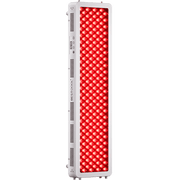









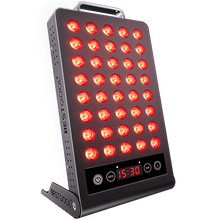
 Small
Small
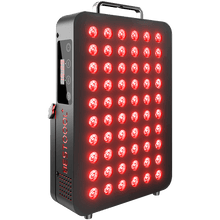
 Moderate
Moderate
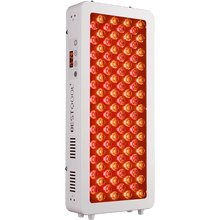
 Moderate
Moderate
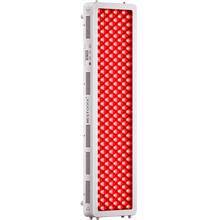
 Moderate
Moderate
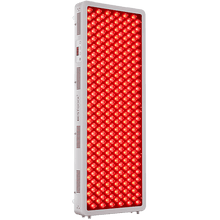
 Full
Full



